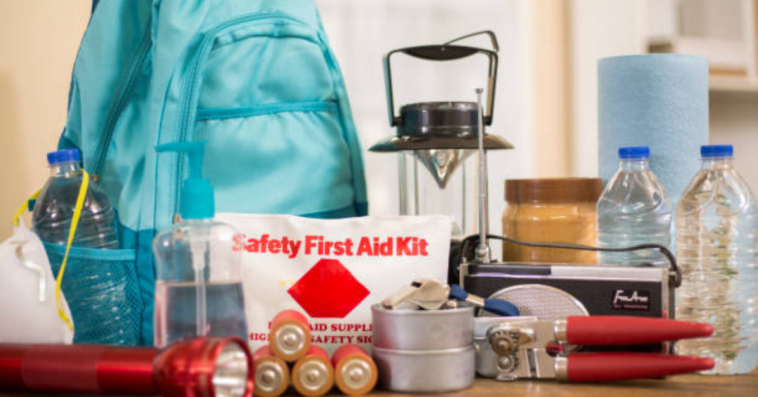As Tropical Storm Helene approaches, it’s crucial to prepare your family—including children, pets, and elderly members—for the challenges ahead. A well-structured emergency plan can make the difference between safety and chaos. This guide will take you through the necessary steps to ensure your loved ones are ready for the storm.
Step 1: Discuss Your Emergency Plan
Formulate Your Plan
Floridadisasters.org encourages residents to discuss four key questions:
- How will I receive emergency alerts and warnings?
Familiarize yourself with local news sources, weather apps, and community alert systems. Sign up for text or email alerts to receive real-time information. Invest in a battery-operated or hand-crank NOAA weather radio to receive emergency alerts and updates. Keep portable chargers or power banks charged and accessible to maintain phone battery life so you can have access to the internet and news outlets if power does go out in your home.
- What is my shelter plan?
Identify safe locations within your home. These will be places that have no windows in case wind and or debris bursts through the glass. Think about stocking these areas with essentials like food, water, medicine and access to the news as families could spend a lot of time in their shelters waiting for it to be safe for them to leave. Also, discuss with friends or family the possibility of staying with them if there is a need for you to evacuate your home and look at local shelters near you that will fit your needs.
- What is my evacuation route?
Updates on evacuation alerts within your zone will be available with your local news outlets. Once you have decided where you could potentially go if told you need to evacuate, research and plan multiple routes to avoid traffic and road closures and share these routes with your family. As gas stations may be closed during this time, keep a full tank of gas to ensure you will be able to get to your location whether it be a shelter or a friend or family member’s home. Pack yourself a “go-bag” so you and your family will be prepared with your essentials in case you need to leave for somewhere safer.
- What is my family/household communication plan?
Establish a check-in system for you to check-in with those in the house and family or friends in other areas throughout the day whether it be through texts, calls or social media. If power goes out, Walkie-Talkies can become your new mode of communication within your house or amongst neighbors.
Step 2: Consider Specific Needs
Take the time to tailor your plan and assess the specific needs of everyone in your household, including:
Children
- Prepare Together:
- Involve children in the preparation process. Let them help pack emergency kits or create a family plan, which can give them a sense of control and allow them to understand a bit more of what is going on.
- Establish a routine:
- Maintain familiar routines as much as possible. Stick to regular meals and sleep times to provide structure.
- Create a Comfort Zone:
- Set up a cozy area with blankets, favorite toys, and books to create a haven where they can relax.
- Use Distractions:
- Engage in calming activities like reading, drawing, or playing games. This can help take their minds off the storm.
- Explain the Situation:
- Be honest but reassuring about the hurricane. Use simple language to explain what’s happening and what to expect.
- Practice Breathing Techniques:
- Teach them simple deep-breathing exercises to help manage anxiety if they begin to get a bit nervous. For example, inhale deeply for a count of four, hold for four, and exhale for four.
For Pets
- Create a Safe Space:
- Designate a quiet, secure area in your home for your pets, filled with their favorite bed, toys, and blankets. If you and your family potentially need to evacuate, look into pet friendly shelters ahead of time.
- Use Calming Products:
- As pets can often become a bit rattled by storms, consider using anxiety wraps, pheromone diffusers, or calming treats designed for your pet.
- Provide Distractions:
- Engage your pets with interactive toys or games to redirect their attention away from the storm.
- Stay Calm Yourself:
- Pets pick up on human emotions. Speak softly and reassuringly and try to remain calm to help them feel secure.
- Comfort Through Physical Touch:
- Petting or cuddling can provide comfort. Being close to your pets can help both of you feel more at ease.
For the Elderly
- Create a Comforting Environment:
- Ensure their space is well-lit, quiet, and familiar. Use soft lighting and comforting items like blankets and family photos.
- Keep Them Informed:
- Share updates about the storm in a clear and calming manner. This helps reduce uncertainty and fear.
- Encourage Familiar Activities:
- Engage in activities they enjoy, such as reading, watching movies, or listening to music, to keep their minds occupied.
- Offer Reassurance:
- Frequently reassure them that they are safe and that you are there to support them. Your presence can be very comforting.
- Assist with Physical Comfort:
- Make sure they have any necessary medications and supplies nearby. Help them stay comfortable by adjusting room temperature and providing plenty of water.
- Plan for Social Interaction:
- If possible, connect them with family members via video calls or phone calls. Familiar voices can be very comforting.
Step 3: Create an Emergency Plan
You can create an emergency plan with your family online to ensure everyone is on the same page and understands their responsibilities. Aswell, you can create a Family Communications Plan that outlines how family members will stay in touch. This may be helpful to print out incase the power goes out and you no longer have access. Be sure to also share it with loved ones outside of your household. This includes:
– Emergency contacts
– Social media channels for updates
– Alternative communication methods (e.g., texting, social media)
Step 4: Practice Your Plan
Once your plan is in place, practice it regularly with your family. Run through different scenarios to ensure everyone knows what to do:
-Evacuation drills: Practice getting to your chosen shelter or meeting place quickly.
– Communication drills: Test your communication methods to ensure everyone knows how to reach each other.
Involve Everyone
Make sure children and elderly family members understand their roles. Turn the practice into a fun learning experience rather than a stressful drill. Use games or scenarios to help them grasp the importance of preparedness.
Additional Tips for Hurricane Preparation
-Emergency Supplies: Create an emergency kit that includes food, water, first-aid supplies, flashlights, batteries, and important documents.
-Stay Informed: Continue to monitor weather updates as the hurricane approaches. Stay informed about changes in the storm’s path or intensity.
– Mental Preparedness: Discuss fears and anxieties with your family. Preparing mentally can help alleviate stress and improve overall resilience.
Preparing your family for Tropical Storm Helene is a proactive step that can lead to safety and peace of mind during a crisis. By creating a comprehensive plan that considers the unique needs of your household, practicing that plan, and ensuring effective communication, you can navigate the storm with confidence. Remember, the time to prepare is now—don’t wait until it’s too late. Together, your family can face Helene head-on and emerge safe and secure.








Comments